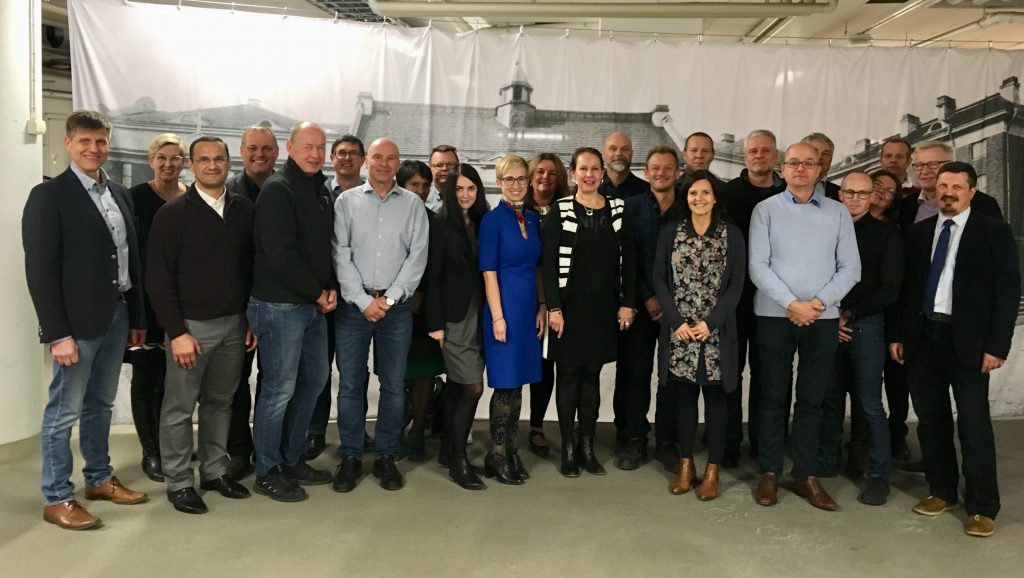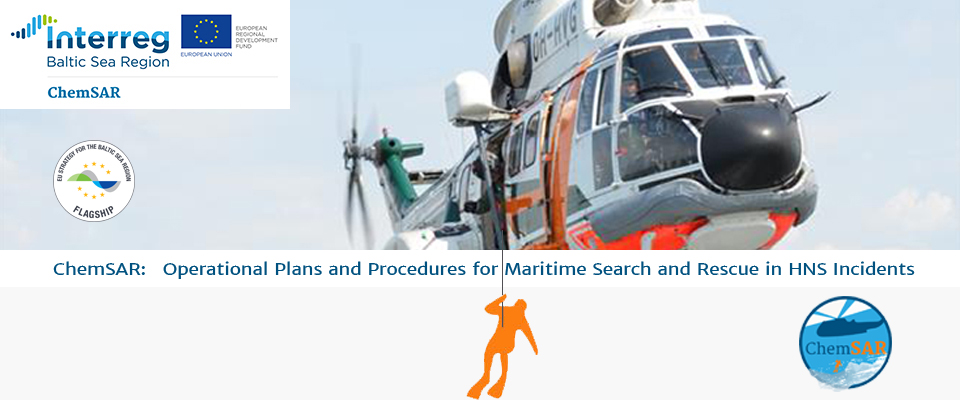ChemSAR best-practices spread further in ResQU2
ChemSAR work continued in the ResQU2 project platform that started its work in the autumn 2018. It was right after ChemSAR had piloted its outcome in a live exercise at sea. Results were ready for the ResQU2 to commence. The platform has now also ended but it was successful in enhancing the use of ChemSAR solutions by including them in further exercises and by demonstrating them in national and international events. ResQU2 was to disseminate the lessons learnt of four flagship projects.

ChemSAR OPs and SOPs getting noticed
The main ChemSAR outcome were the operational plans and standard operational procedures in HNS incidents created to improve the preparedness for chemical emergencies at sea. With these, ChemSAR aimed at making rescue operations safer both for the rescuees and rescuers. During ResQU2, ChemSAR’s OPs and SOPs were disseminated and tested further. The aim is not just to have these guidelines but develop them further as experience gathers. Apart from ResQU2’s own events, ChemSAR outcome was demonstrated and received international recognition in many other occasions as well. Gained ChemSAR learning experiences and solutions were communicated in external events, such as the Arctic Coast Guard Seminar organised in Turku, or in the Maritime Search and Rescue Conference in Tallinn, both arranged in the spring 2019. Other competent authorities and NGO’s were also reached to raise awareness and increase their capacities. Furthermore, the developed guidelines were included in the HELCOM Balex Delta, in the autumn 2020, and HELCOM Balex Alpha exercises, spring 2021.
Moreover, ChemSAR multinational rescue and response procedures in HNS incidents were processed during EMSA TCG-HNS meetings. Possibilities for training and sharing best-practices were considered when formulating a course for sharing information and finding the best-practices. In the HELCOM CG HNS Manual working group, proposals and observations regarding the Inter-regional Marine HNS Response Manual, which is currently in-process, procedures and capabilities developed or discussed in ResQU2 were taken into account. Through EMSA, these project outputs will be used to guide all Member States.
Additionally, ChemSAR Handbook for Maritime SAR in HNS incidents was published on the internet site of the International Maritime Rescue Federation (IMRF) for the whole rescue world to see. Also links to ChemSAR website, Chemical dataportal and eLearning materials are now found there. So, being part of the ResQU2 project platform, ChemSAR achievements have reached quite a large audience within rescue authorities and relevant stakeholders in the Baltic Sea and North Sea areas and beyond.
What was ResQU2 project platform?
The ResQU2 project platform was to increase emergency preparedness at sea and in seaports by communicating, discussing and demonstrating learning experiences and best practices discovered in the four flagship projects ChemSAR, DiveSMART Baltic, HAZARD and MIRG-EX, and also to investigate ways to make transnational rescue operations safer and more efficient. During the platform, best-practices were disseminated in several local and national workshops and high-level meetings and co-operation seminars, and in addition, in rescue and response exercises. Platform partners had a good coverage of different types of partners engaged in rescue operations at sea and in ports as end-users, such as rescue authorities and services were involved but also knowledge partners, i.e. university and academies. They represent ten organisations in eight countries. ResQU2 contributed to capacity building of maritime and rescue authorities as partners furthered lessons learnt, discussed, analysed gained new information, and produced recommendations.

Leave a Reply